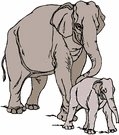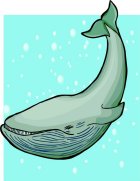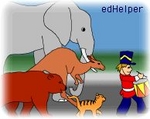
Worksheets and No Prep Teaching Resources
Reading Comprehension Worksheets
Animal Themes
Mammals
Oceans

Animal Themes
 Worksheets and No Prep Teaching Resources Reading Comprehension Worksheets Animal Themes Mammals Oceans |
 Animal Themes |
| edHelper's suggested reading level: | grades 5 to 7 | |
| Flesch-Kincaid grade level: | 7.81 |
|
Humpback Whales
By Vickie Chao |

|
 1 Out in the open water, there are many marine animals famous for pulling off some incredible stunts. The octopus, for example, can change the color of its skin to match its surroundings. The pufferfish can enlarge its body to more than twice its normal size. The female anglerfish has a modified spine that resembles a baited fishing rod. The flying fish has wing-like fins that allow it to glide gracefully above the surface. And of course, there is the humpback whale that can breach (leap out of the water), spyhop (poke its head out of the water to have a look around), and lobtail (stick its tail out into the air and slap it on the water's surface). Its acrobatic performance is one of the most amazing shows on Earth!
1 Out in the open water, there are many marine animals famous for pulling off some incredible stunts. The octopus, for example, can change the color of its skin to match its surroundings. The pufferfish can enlarge its body to more than twice its normal size. The female anglerfish has a modified spine that resembles a baited fishing rod. The flying fish has wing-like fins that allow it to glide gracefully above the surface. And of course, there is the humpback whale that can breach (leap out of the water), spyhop (poke its head out of the water to have a look around), and lobtail (stick its tail out into the air and slap it on the water's surface). Its acrobatic performance is one of the most amazing shows on Earth! |
Create Weekly Reading Books
Prepare for an entire week at once! |
| Leave your feedback on Humpback Whales (use this link if you found an error in the story) |
 |
Animal Themes
|
 |
Mammals
|
 |
Oceans
|
|
|